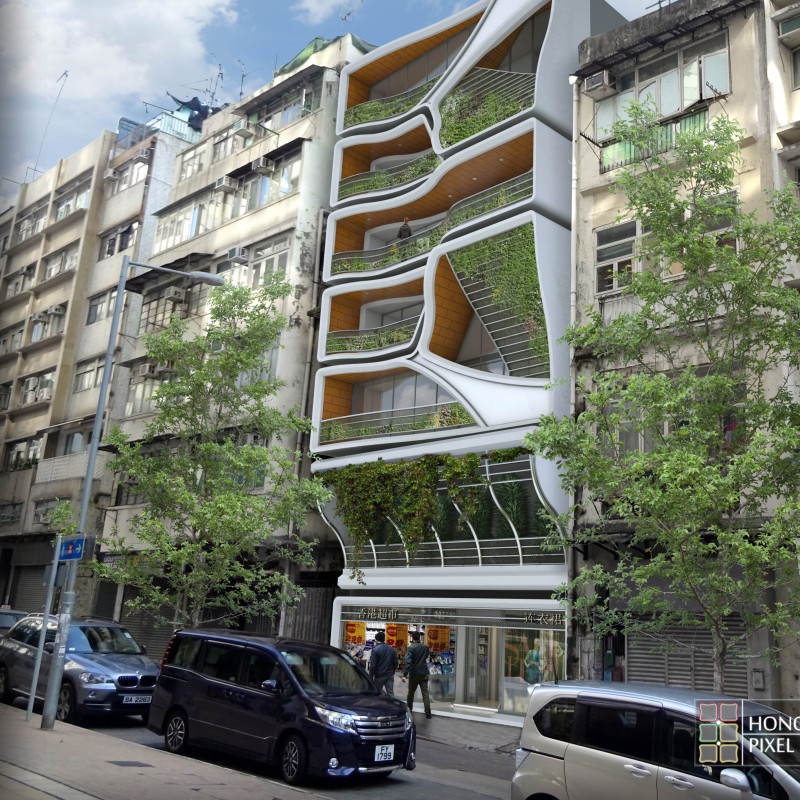5 key facts about this project
At its core, this architectural design consists of modular units that can be configured in various ways to meet the diverse needs of residents. This modularity allows for a flexible housing solution that can adapt to changes in family size, lifestyle, and population demographics, ensuring relevance and functionality over time. Each unit is thoughtfully designed to maximize space and light, featuring open layouts that encourage interaction among residents while maintaining personal privacy.
The essential components of the design include a robust structural framework that utilizes steel as a primary material, ensuring both strength and longevity. The exterior façade is characterized by a combination of glass and metal, providing a modern aesthetic while fostering connectivity with the surrounding environment. The extensive use of glass in the design not only enhances visual transparency but also facilitates natural light penetration, creating a bright and welcoming atmosphere indoors.
The inclusion of vertical gardens serves as a distinctive feature of the project, reflecting a commitment to sustainability and environmental consideration. These vertical green spaces are designed to improve air quality, reduce heat retention, and introduce a natural element into the urban fabric. The project emphasizes the importance of nature in architectural design by integrating plant life into both the facades and communal areas, thus promoting biodiversity in urban settings.
Community engagement is a fundamental aspect of the Pixel Homes project. The design incorporates communal spaces such as recreational gardens and facilities, enabling residents to interact and foster a sense of belonging. These shared areas are intended to be multifunctional, accommodating activities ranging from social gatherings to fitness and leisure, enhancing the overall quality of life for inhabitants.
The project’s sustainability initiatives extend beyond greenery. Its design allows for efficient energy use, with renewable energy sources and smart home technologies integrated into the architectural framework. These features not only minimize the environmental footprint of the development but also promote a culture of sustainability among residents.
The architectural ideas behind Pixel Homes reflect a response to current urban trends, emphasizing the need for flexibility in housing solutions. This adaptability is crucial as cities like Hong Kong experience constant fluctuations in population and lifestyle changes. By allowing for easy modifications to living spaces, the design encourages long-term residency and investment in community ties.
Pixel Homes encapsulates a unique approach to urban living, recognizing the need for housing that is not only efficient but also responsive to the needs of its residents. This project highlights how architecture can play a vital role in shaping modern urban life, bridging the gap between individual requirements and communal well-being.
Those interested in further exploring the architectural plans, sections, and designs of the Hong Kong Pixel Homes project can find valuable insights by delving into a comprehensive presentation of the project. Understanding these architectural elements will provide a more nuanced appreciation of how this design meets the demands of contemporary urban living while fostering a strong sense of community and environmental responsibility.


























